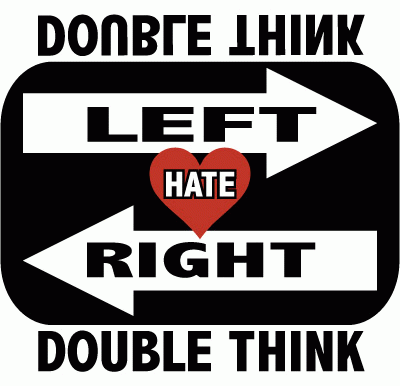doublethink by Steve Consilvio
Man is very good at both creating problems and solving them. Unfortunately, we do not discover that our solutions are making things worse until after the fact. We are a creative species as a necessity of survival. We try to solve problems as we understand them, but can we solve them better? Our solutions form a court of public opinion, or conventional wisdom, which becomes our working definition of virtue. Every generation prepares the next generation for the role of responsibility. We teach the virtues we believe.
There are, of course, huge debates over various issues. One would like to believe that after thousands of years clever people have solved all of the world's challenges, but we all know that is not the case. We conquer old problems and new ones arrive. Every child must learn virtue anew, and what they learn is often inaccurate.

Big History Triplethink by Steve Consilvio
The Big History model encompasses all of the shifts of human understanding and action, and can be applied to any dispute or agreement or philosophical perspective. It helps to reveal the power of ideas. While a big idea about big ideas, it fits at the micro level, too. It scales from the individual person, up to individual organizations, and onward to schools of thought and the entire history of mankind. The micro is the macro. It can help us discern consistencies and inconsistencies. Inconsistencies are at the root of all conflicts and failures. Emerson wrote that a "foolish consistency is the hobgoblin of little minds." It follows then, that a wise consistency is the foundation of progress.
The Big History model is dynamic. The cultural gears are in constant motion, and everyone is a unique evolutionary machine. We can plot our own virtue and prejudices and how others arrive at theirs. The Big History model might be a map for success. The hope is once we can see our strengths and weaknesses that we can then separate them.
To accomplish our needs, we have formed goal-focused organizations that represent empire types. These empires are represented by the elements that overlap. Governments combine social and physical, and exclude the abstract; for-profit businesses combine the physical and abstract, and exclude the social; non-profit organizations combine abstract and social, and exclude the physical. At the center, all the circles overlap. Here are the individuals that make up society.
We all work for and promote the empires. Directly or indirectly, we are the connecting force between all ideas, organizations and actions. We fill our roles based on how we combine the various philosophies and opportunities. We have some freedom to choose which empires and which beliefs we will subscribe to, but we are impacted by all of them, regardless of our personal beliefs.
The Big History model is a system of opposites. Each empire combines two ideas and excludes a third. That makes each empire unique, and each has the potential to be an ally or an adversary with the other empires. However, the elements that create the empires are not homogenous. The larger circles independently represent a body of thought regarding the contentious topics of religion, politics and economics. There are literally millions of nuances among competing religious, political and economic theories. For example, Christianity is just one of many religions, and there are thousands of sects within it. There may be commonality on one issue and hard disagreement on another.
Organizations and sub-organizations form within the empires based on a unique combination of different prejudices. For example, the empire of government has three levels (federal, state and local) and within each level there are thousands of departments and agencies. Outside of government there are watchdog and lobbyist groups, supporters and detractors, manipulators and consultants, suppliers and opportunists. Every point of view can be considered a prejudice, not because of a desire to be hurtful to others, but because most beliefs, as the model implies, are incomplete.
There are no shortages of opinions. Every goal, action, problem, and procedure are being viewed differently. One person will be bragging about what another finds shameful. There are opposites everywhere, and comparative analysis can help survey how our ideas, emotions and actions interact. The following chart details some of the assumptions behind our prejudices and virtues. The assumptions of each realm are similar but have different nuances. An appreciation for subtlety is how we solve problems.
Next Page 1 | 2 | 3 | 4 | 5 | 6 | 7 | 8 | 9 | 10
(Note: You can view every article as one long page if you sign up as an Advocate Member, or higher).






